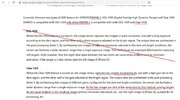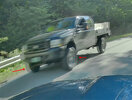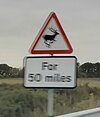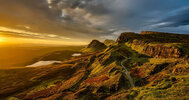You are using an out of date browser. It may not display this or other websites correctly.
You should upgrade or use an alternative browser.
You should upgrade or use an alternative browser.
VIOFO А119V3 FIRMWARE
- Thread starter gse
- Start date
Kremmen
Well-Known Member
- Joined
- Sep 14, 2017
- Messages
- 3,205
- Reaction score
- 1,730
- Location
- Reading
- Country
- United Kingdom
- Dash Cam
- 2 x Viofo A119 V3
Also .....
When I played back the footage I heard the dreaded old vibration in the sound.
After investigation, the top USB cable was vibrating against the roof lining. When I repositioned I hit a bad length where it wasn't being damped and had some free movement. Previously it was about half an inch higher so pressing harder against the lining. My solution is a 3mm thick small rubber circle stuck on the windscreen, in the top black area so not visible, which has pressed the cable against the roof lining so no more movement.
So vibration noise not always a missing unit to mount pad.
When I played back the footage I heard the dreaded old vibration in the sound.
After investigation, the top USB cable was vibrating against the roof lining. When I repositioned I hit a bad length where it wasn't being damped and had some free movement. Previously it was about half an inch higher so pressing harder against the lining. My solution is a 3mm thick small rubber circle stuck on the windscreen, in the top black area so not visible, which has pressed the cable against the roof lining so no more movement.
So vibration noise not always a missing unit to mount pad.
Dashmellow
Well-Known Member
- Joined
- Sep 22, 2013
- Messages
- 18,264
- Reaction score
- 18,912
- Location
- Uncanny Valley (●_●)
- Country
- United States
- Dash Cam
- Umpteen
Well, yes, you know what I mean
At first I didn't know what you meant because a double exposure and motion blur are not the same thing.
Interestingly, I've noticed that the various firmware mods appear to improve the timing of the HDR induced double exposures over the stock firmware, but they do not eliminate the issue.
Way back in July, 2020 Viofo said, "Using the multiple exposure HDR, it is almost impossible to solve this."
So, this may indeed be the case regardless of what is done in the modded firmware.
Kremmen
Well-Known Member
- Joined
- Sep 14, 2017
- Messages
- 3,205
- Reaction score
- 1,730
- Location
- Reading
- Country
- United Kingdom
- Dash Cam
- 2 x Viofo A119 V3
I'm using the VVS firmware based on stock 2.05 and not a perfect result, as seen.
TBH I prefer better daytime footage so HDR is now off and I've reduced back to 2560x1080 to see if my previous bad positioning, showing quite a chunk of car windscreen black plastic cover, was affecting the EV sensor.
My old car windscreen plastic housing was about 4" wide but this new car with multiple front cameras and sensors must be nearer to 10"
TBH I prefer better daytime footage so HDR is now off and I've reduced back to 2560x1080 to see if my previous bad positioning, showing quite a chunk of car windscreen black plastic cover, was affecting the EV sensor.
My old car windscreen plastic housing was about 4" wide but this new car with multiple front cameras and sensors must be nearer to 10"
Mtz
Well-Known Member
- Joined
- Nov 15, 2012
- Messages
- 4,269
- Reaction score
- 2,930
- Location
- Nice place
- Country
- Romania
- Dash Cam
- Viofo A229 Pro TeleQuad
I think it is motion blur or whatever is the name of an image composed by two consecutive images.If you look closely it is not motion blur, it is an HDR induced double exposure.
As already wrote some people here, the definition of HDR is based on exposure like you wrote, but the image must be static. The HDR offered by Viofo (Novatek) combine two exposures of two consecutive frames and the result is not OK. There can be some advantage at night when reading car license plates but this is never guaranteed to work. Discussing again the same HDR thing here will result in a lot of offtopic. Actual technology cannot do more about HDR no matter how much will work Novatek or Viofo.Way back in July, 2020 Viofo said, "Using the multiple exposure HDR, it is almost impossible to solve this."
Maybe with next generation STARVIS 2 of Sony CMOS the dashcams HDR will work also on consecutive images because of the new feature called Clear HDR. (DOL HDR is already on STARVIS and as we can see on A119 V3, HDR this is not helping too much during night and during day it is worst than without it.
So I will be more interested about studying the HDR after the first dashcam with a STARVIS 2 will be released.

enjoy,
Mtz
Dashmellow
Well-Known Member
- Joined
- Sep 22, 2013
- Messages
- 18,264
- Reaction score
- 18,912
- Location
- Uncanny Valley (●_●)
- Country
- United States
- Dash Cam
- Umpteen
I think it is motion blur or whatever is the name of an image composed by two consecutive images.
As already wrote some people here, the definition of HDR is based on exposure like you wrote, but the image must be static. The HDR offered by Viofo (Novatek) combine two exposures of two consecutive frames and the result is not OK. There can be some advantage at night when reading car license plates but this is never guaranteed to work. Discussing again the same HDR thing here will result in a lot of offtopic. Actual technology cannot do more about HDR no matter how much will work Novatek or Viofo.
Maybe with next generation STARVIS 2 of Sony CMOS the dashcams HDR will work also on consecutive images because of the new feature called Clear HDR. (DOL HDR is already on STARVIS and as we can see on A119 V3, HDR this is not helping too much during night and during day it is worst than without it.
So I will be more interested about studying the HDR after the first dashcam with a STARVIS 2 will be released.
View attachment 58899
enjoy,
Mtz
I think we disagree on the definition of "motion blur" vs "out-of-register double exposure HDR".
Since I was responding to @Kremmen's post of an image that appears to have a HDR double exposure rather than motion blur and indeed this has been discussed several timespreviously in this thread soI do think it is still on topic.
Motion blur is a smearing of the image of moving objects due to slower shutter speeds.
Here is a copy of one of Kremmen's images that provides a good example of motion blur.

HDR double exposure is a different effect. Here is a a re-post of and older example I posted some time ago that shows the out-of-sync double exposure HDR effect quite clearly.
The image also confirms what you said about how "the image must be static" if you look at how the "static" hood of my truck was clearly captured without any double exposure but the moving truck is double exposed.

Kremmen's latest image appears to also be a HDR double exposure similar to the above image. It is not typical smeared motion blur from a slow shutter speed.

So far, HDR in the modded firmware seems to work fairly well at night to capture European sized license plates but it doesn't work so well to capture the smaller Canadian and American sized license plates at night.
At the same time, HDR seems to diminish the daytime results for capturing plate numbers and other objects. I guess using HDR is a matter of which priority is more important to the user. For now, I have disabled HDR since most of my driving is during the daytime hours these days anyway.
I too am interested in seeing the results that can be achieved from the next generation of Clear HDR. It will be great if these problems can be resolved.
Last edited:
JockoT
Member
- Joined
- Aug 31, 2021
- Messages
- 59
- Reaction score
- 19
- Location
- Danderhall, Scotland.
- Country
- United Kingdom
- Dash Cam
- VIOFO A119 V3 Nextbase NBDVR512G
The only way to avoid double images in HRD is to take both images simultaneously. The obvious (but expensive) way to do this is two lenses. However, if one image is taken then digitally processed with two exposures this avoids the problem of mismatched images. I have used this in still photography where a RAW image is processed for two different exposure levels then merged to give one image as shown here.


Dashmellow
Well-Known Member
- Joined
- Sep 22, 2013
- Messages
- 18,264
- Reaction score
- 18,912
- Location
- Uncanny Valley (●_●)
- Country
- United States
- Dash Cam
- Umpteen
Multiple image HDR still photography goes back many decades long before digital imaging came along. I first learned to use it using an 8x10 view camera for interior architectural work with mixed lighting where you could put as many exposures as required on a single sheet of film.
HDR for videography is really a whole different animal however. Sophisticated high end cinematography cameras have the processing power, memory and firmware than can handle HDR easily, even at high frame rates, but unfortunately $100 dash cams like the A119 V3 do not have that kind of processing power, memory or the firmware to properly handle HDR. Hopefully, we will see improvements as small camera technology matures and comes down in price. When I think back to the performance of the first dash cam I purchased 11 years ago it is quite amazing how far things have come.
HDR for videography is really a whole different animal however. Sophisticated high end cinematography cameras have the processing power, memory and firmware than can handle HDR easily, even at high frame rates, but unfortunately $100 dash cams like the A119 V3 do not have that kind of processing power, memory or the firmware to properly handle HDR. Hopefully, we will see improvements as small camera technology matures and comes down in price. When I think back to the performance of the first dash cam I purchased 11 years ago it is quite amazing how far things have come.
Last edited:
Karagandinez
Well-Known Member
- Joined
- Nov 27, 2020
- Messages
- 1,616
- Reaction score
- 1,673
- Location
- Deutschland
- Country
- Germany
- Dash Cam
- Viofo & Vantrue
M_2_715_FWA119V3Hi ! Please share "the VVS Mod firmware based on stock 2.05". Thanks !
VIOFO А119V3 FIRMWARE
Do the ppl modding firmware's say what changes they have made ? in case the brand want to do the same in the factory firmware's. :D vvs, as well as many other ppl (myself included) wtote directly to viofo with direct suggestions of introducing/fixing the particular feature(s) tested in mod...
torque
New Member
Not quite right. In my case it repeats everytime it is able to OCR a speed limit sign.Thanks.
Just took it 2.6T for a quick test around the suburb.
I like the speed sign voice notification, I notice it doesn't repeat the same speed if the speed sign is the same, it only notifies you when there is a change up or down, nice.
mariomart
Active Member
- Joined
- Feb 28, 2013
- Messages
- 368
- Reaction score
- 177
- Location
- Western Australia
- Country
- Australia
- Dash Cam
- Viofo A119 Mini, Viofo A119 V3, Viofo A119S V2
You're right, mine now does the same. Must have been the lighting at the time.Not quite right. In my case it repeats everytime it is able to OCR a speed limit sign.
torque
New Member
I wish you were right though. It gets annoying.You're right, mine now does the same. Must have been the lighting at the time.
Kremmen
Well-Known Member
- Joined
- Sep 14, 2017
- Messages
- 3,205
- Reaction score
- 1,730
- Location
- Reading
- Country
- United Kingdom
- Dash Cam
- 2 x Viofo A119 V3
>> VVS Mod 2_5 <<
Once downloaded dont forget to rename to just FWA119V3.bin with exactly that capitalisation
Once downloaded dont forget to rename to just FWA119V3.bin with exactly that capitalisation
| Thread starter | Similar threads | Forum | Replies | Date |
|---|---|---|---|---|
| D | Viofo A119 V3 Issue | A119 V3 | 11 | |
| R | Viofo A119 V3 HDR/Not HDR, 60fps/30fps, CPL/No CPL | A119 V3 | 21 | |
| R | Viofo A119 V3 on special price | A119 V3 | 1 | |
| D | Viofo A119 v3 (Firmware 2.6) Stop & Go on Red Lights | A119 V3 | 5 | |
|
|
VIOFO A119 V3 no longer recording GPS | A119 V3 | 7 |

